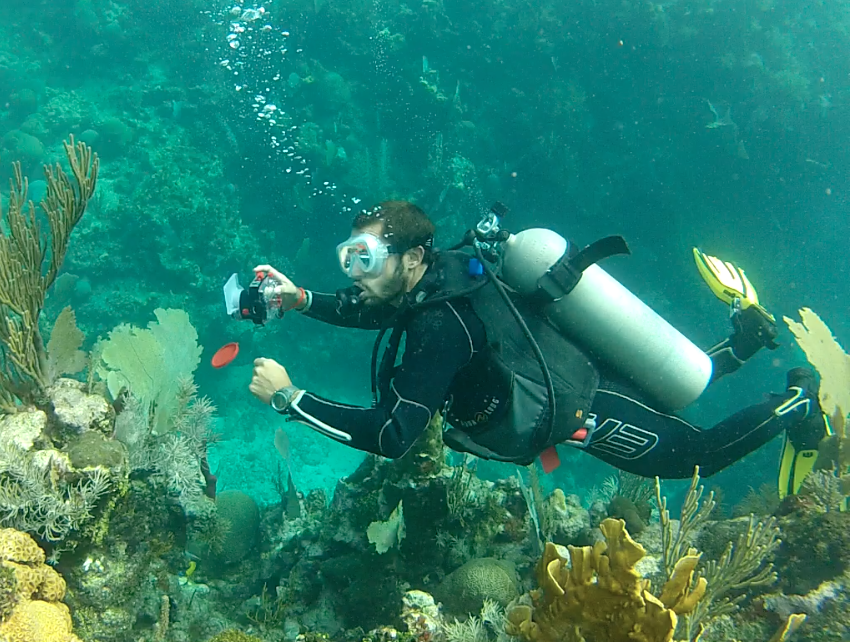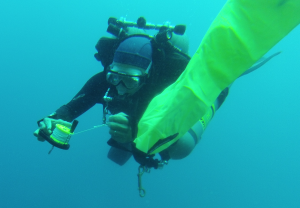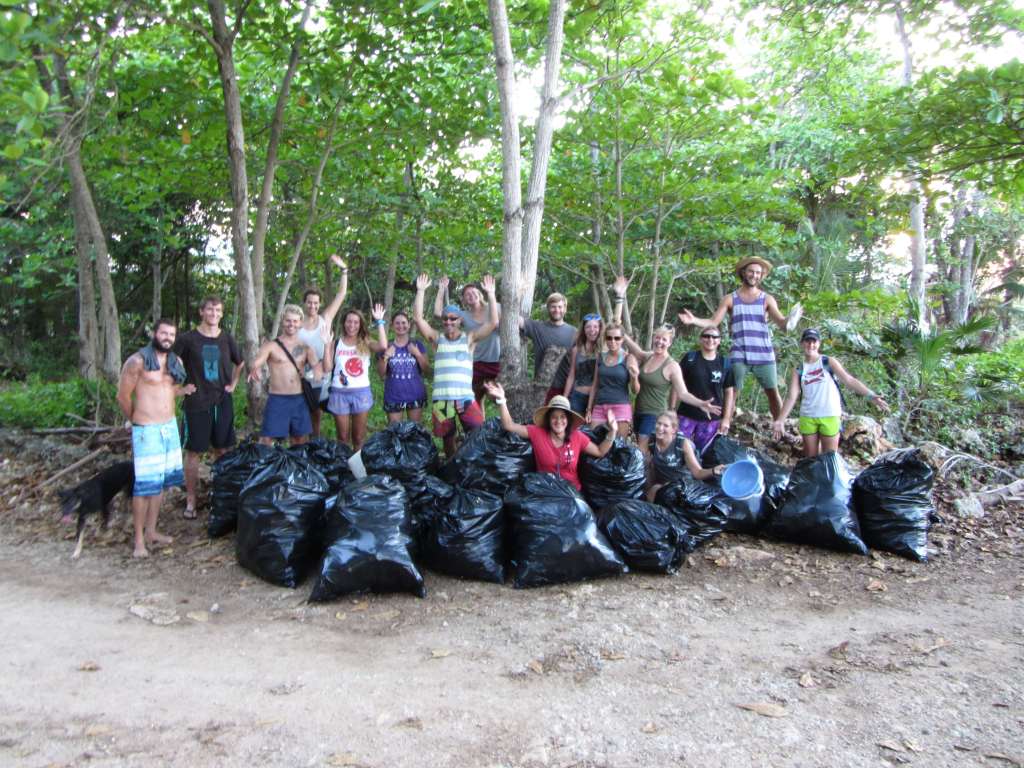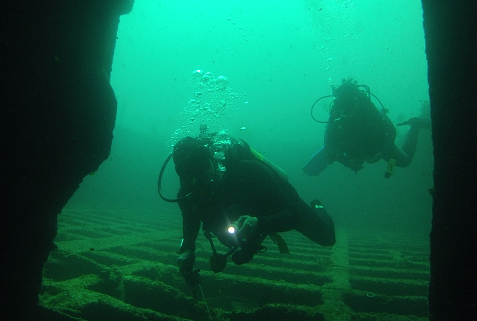As 2014’s Christmas festivities have come to an end and the New Year’s celebrations remain a blurry memory, it’s that time of year worldwide when millions of people make their resolutions for the upcoming year: losing weight, exercising, saving more, working less, being nicer, etc. Many of these resolutions are repeats of what we promise to ourselves year after year.
If our commitment to our resolutions doesn’t last, it’s because we tend to see them as tasks to complete, rather than permanent lifestyle changes. As Aristotle said, “We are what we repeatedly do. Excellence, then, is not an act, but a habit.” Like many people, I confess to making New Year’s resolutions that tend to disappear with the Christmas decorations in January. But as the Training Director for a PADI Career Development Center that conducts dive-training programs, from beginner to Instructor-level scuba training, we constantly resolve to help people become better scuba divers. If you’re new to the sport or haven’t dived in a while, here are a few areas for you to think about and practice. If incorporated as habits, these resolutions will help you not just become a better diver, but also achieve excellence in our amazing sport.
Buoyancy, Trim and Propulsion
This is the scuba divers’ equivalent of visiting the gym to get fitter, leaner and healthier, yet these are fundamental dive skills. Good buoyancy, trim and propulsion will improve your air consumption and give you more bottom time. And you’ll feel less exertion, particularly when diving in currents. Most divers are familiar with the concept of buoyancy from their entry-level class, but many still struggle to fine-tune the skill. Begin by checking that you’re not overweighed, as this is the probable cause of buoyancy problems. Descents should be slow and controlled, and you should need only a little air added to your BCD to get neutral. Your trim (positioning) while finning should be horizontal, with your thighs in line with your torso, your lower legs bent at the knee 90 to 120 degrees, and fins parallel to the body, all while swimming at a constant depth. There are many different kicking techniques for efficient propulsion, which of these you choose can vary depending on the diving environment, such as in current, in overheads like wrecks or caves, or above the reef. Check here for tips on better propulsion techniques.
Pursue Your Passions
At the start of the year, we often resolve to take up a new activity. We may be biased, but there aren’t many sports that can compare to scuba in the way it can offer so much to people with diverse backgrounds and interests, who are all connected by a love for the ocean. Hobbyists such as photographers, historians, naturalists, explorers, hikers, mountain climbers, environmentalists and thrill seekers can all find a related pursuit when they take up scuba diving, whether it be in underwater photography/videography, wreck diving, fish ID and creature spotting/muck diving, cave and tec diving or coral-reef restoration and ecology programs. Once you’ve mastered your buoyancy, trim and propulsion as discussed above, look to pursuing areas that you are passionate about, as this will give you so much more enjoyment from your diving. As an Instructor, I’ve trained thousands of divers over the years, at all levels, and the ones who get the most from their dives are always those who have specialized in a particular path or field, so make one of your resolutions to seek out an experienced Instructor in a particular field or specialty and learn from them.
Five Essential Skills to Master
Many of us strive to make a positive difference by bettering ourselves and our environments; the same ethos applies to diving, where we should take the time to master our skills beyond what we demonstrated just once in our entry-level training. Mastering these additional skills will make you a safer and more confident diver.
- Surface marker buoy (SMB) deployment with reel or spool: This is essential on drift dives, where there is a lot of boat traffic, in low-visibility waters or when big waves are present. Effectively deploying an SMB also helps to maintain group control on ascents and safety stops.

- Back finning, helicopter turns and horizontal descents/ascents: These skills are ideal in confined spaces. They help protect the environment by preventing silt outs and a stirring up of bottom composition. And with better control, as well as slower and safer descents/ascents, you’ll ooze coolness like a tec diver.
- Navigation with compass and natural reference: This skill is essential when diving without a guide — sometimes even with a guide.
- Time/depth/gas awareness: These skills are hard to teach, but get into the habit of constantly checking your remaining air, your depth, and your time. Your situational awareness will increase with every dive, so you’ll always be able to approximate your current air supply, depth and time — like a true Jedi.
- Dive planning, calculating depth/time and air consumption: Even though GPS and SatNav make modern-day road trips easier, a good driver will still look at his route and know how much fuel he needs and the time the journey should take. The advent of dive computers makes dive planning somewhat optional, but a good diver will always have an idea of his time limits and know approximately how long his air will last prior to entering the water.
Support a Cause – Our Environment Needs You
It’s not just our own lifestyle, health and home that we should resolve to make better in 2015, but also our environment, which needs some TLC as well. We constantly read in the media and in scientific reports how the oceans are overfished, coral reefs are degrading, coastal areas are under threat of development, certain species face extinction and how the oceans are littered with garbage that is harmful to aquatic life.
To quote anthropologist Margaret Mead, “Never believe that a few caring people can’t change the world. For indeed that’s all who ever have.” PADI’s Project AWARE, although a small movement in the global scheme, has been instrumental in 2013 and 2014 in pushing through legislation to protect sharks and rays. The Sea Shepherd organization has had success in the last few years patrolling the South Pacific and protecting whales from illegal fishing, and documentaries such as “The Cove” and “Blackfish” have raised public awareness about the ethics of captive cetaceans for entertainment. These causes and groups all need our support, whether financially with tax-deductible donations or physically by helping out with local clean-ups and the like. So make 2015 the year that you support a cause and help our environment.
Dive More, Learn More – Continue your Education
The old adage “a good diver never stops learning” is true year round, so taking a dive course is a great way to refresh your dive skills and integrate many of the tips we listed above. Taking a specialized course will not only allow you to pursue an interest, but a good Instructor will also help refine your finning techniques and buoyancy. You can often use your newfound skills and training — particularly deep or technical diving, conservation knowledge or photography skills — to support local environmental causes. Even as an Instructor Trainer, I make the effort to take one or two additional courses a year, not only to advance my own diving skills and knowledge, but also to empathize with what it’s like to be a student again, and to enjoy a wider circle of dive peers. So whatever your interest or passion, your local dive center should be able to help steer you in the right direction, and between the training agencies — PADI, IANTD, SDI/TDI, NAUI, SSI and RAID — there are plenty of options for you to become a better diver this year.
As always, these articles are never intended to substitute for instruction. Take the first steps towards fulfilling your dive resolutions by contacting your local dive center and an experienced Instructor, and perhaps by this time next year, many of these tips will no longer be resolutions, but good habits.





